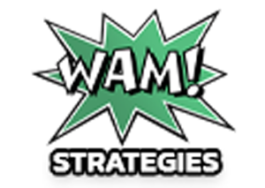1. Choosing the Right CMS Platform
The most popular content management systems—WordPress, Drupal and Joomla!—employ an open-source development model. The “Big Three” have thus spawned large communities of programmers who make improvements and create add-ons that build on the software’s core capabilities. These communities are part of larger ecosystems that include extensive training resources such as books, videos and conferences. [spacer height=”10px”] WordPress is by far the most widely used CMS. Compared with the other open-source systems, WordPress stands out for ease of use. Designers in particular seem to prefer it over Drupal and Joomla.[spacer height=”15px”]
2. Picking the Right Design
First impressions matter — especially when it comes to your website. The right visual design will direct your user’s focus to the content itself, not the structure or layout holding it in place. [spacer height=”10px”] The design of the website should be simple and visually appealing. If you try to overload your website with content (images & videos), it will look like a cluttered mess. Start off slow and gradually enhance your website design as you receive feedback from your core audience.[spacer height=”15px”]
3. Creating a Dynamic User Experience
User experience is very important when it comes to marketing your product or service. Every website should have an intuitive flow for their users to follow on several different electronic devices. (Mobile, Tablet, and Desktop) [spacer height=”10px”]If a user cannot quickly find what he or she is looking for on your website, then your website needs to be revamped. A bad user experience on a website can cancel out all of the positive touch points the user has encountered during their interaction with your company.[spacer height=”15px”]
4. Deliver Valuable Content
The fundamental concept of a content marketing strategy is to create and distribute various forms of valuable content related to your business products or services. The content needs to be written and designed to attract potential customers and clients, and ultimately increase sales. [spacer height=”10px”] If the user likes your content, they will engage with your website and request more information about your business or subscribe to hear more updates from your company.[spacer height=”15px”]
5. Website Management Plan
Every company needs at least one person who is solely responsible for updating and adding new content to the website. Most CMS websites has a set of files that need to be updated from time-to-time in order for the website to work. [spacer height=”10px”] If a website is not updated properly, it leaves open vulnerabilities to people like spammers. Spammers want to hack into your website so that they can steal your user information (email addresses, credit cards, phone numbers, etc.) for money. [spacer height=”10px”] Hackers can also break your website and if you do not have a back-up database, you could lose your website and have to create another one from scratch. That’s why its very important to have a good website development team that can help prevent some of these issues.[spacer height=”15px”]
